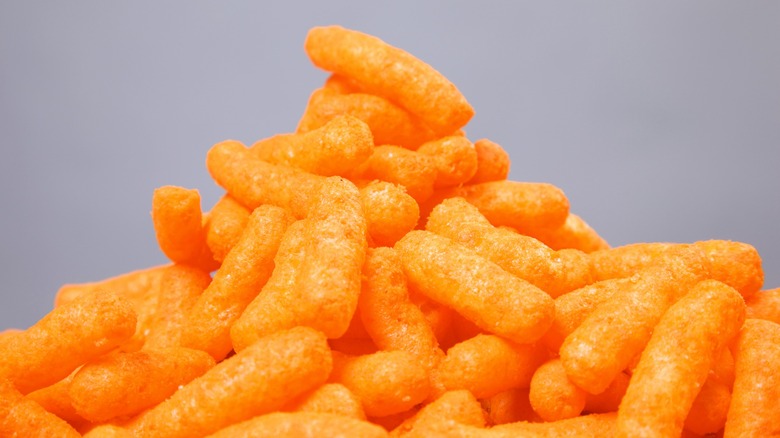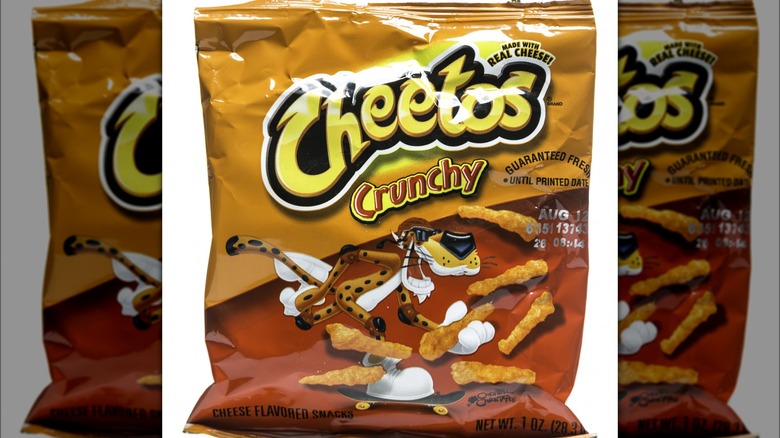The Odd Connection Between Cheetos And The Military
If you grew up trading your boring lunch box snack for a bag of Cheetos from one of your classmates, you're not alone. There's something about licking that orange dust off your fingertips that is downright satisfying. Today, Cheetos are the second most popular salty snack in the United States after Lay's potato chips. However, these crunchy, cheesy morsels didn't get their start as a mainstay of the brown bag lunch. They were born from culinary technology engineered to help feed the U.S. military during times of war.
Cheetos are made from enriched corn meal, oils, artificial flavors, and — most importantly — cheese flavoring. This ingredient was considered cutting edge when this snack was first on the market. The powdery substance came about in 1943 to provide shelf-stable food for soldiers, but snack companies quickly adapted it as a salty seasoning.
Fritos founder Charles Doolin is credited with the invention of the Cheetos brand, and when he first released the snack in 1948, production could not keep up with demand. By 1965, Cheetos had accrued sales upward of $125 million.
Cheetos dust is the original dehydrated cheese
The Cheetos dust that gets left on your fingers after you wolf down a bag of these chips has a unique history that predates the brand itself. As the United States became more entwined in World War II, the military began experimenting with foods that could be easily stored and that had a lengthy shelf life. Dehydrated and compressed foods, which were void of any water content and took up very little space, were a popular option to feed soldiers.
The first dehydrated cheese, an advancement that was previously considered unachievable, was developed by USDA scientist George Sanders. He created a two-step process to remove the water from cheese without melting it, and its final form was a puck of powdered cheese.
When the war ended, the military had a surplus of powdered cheese, as well as other products it had purchased preemptively. Grocery manufacturers, like Kraft and General Mills, bought the excess goods to flavor their products because it saved them money on ingredients, and they could be stored easily. Three years later, Frito Lay released Cheetos, which were made with the same cheddar that the military ate during the war. Today, Cheetos has expanded its empire and its offerings include the original Crunchy variety, as well as Puffs, Popcorn, Pretzels, and more.

